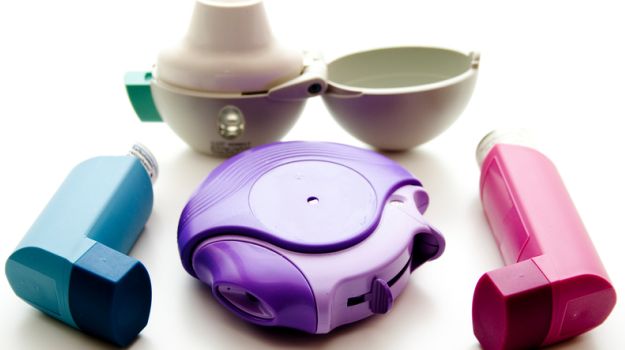Picture Credits: Reuters Asthma is a chronic inflammatory disease that affects the airways of the lungs that become inflamed, narrow or swell up which makes it difficult to breathe. While researchers are still working finding a direct link between asthma and pollution, one thing's for sure that poor air quality can trigger attacks and breathing problems in asthmatics. If you're asthmatic, your airways are hypersensitive and the irritants in the air can cause further inflammation, wheezing, coughing or shortness of breath. In the recent years, a lot of studies have linked the rising levels of pollution to asthma, especially in children and teenagers. World Asthma Day is commemorated every year on the first Tuesday in the month of May by the Global Initiative for Asthma (GINA) to increase awareness around the world. This year, it is being observed on 2nd, May 2017. GINA was jointly launched by the WHO and the US-based National Heart, Lung and Blood Institute for the asthma management and prevention in 1992.
In a poll conducted by Curofy (India's largest community of doctors) in 2015, 82% of the health experts agreed that there has been an increased incidence of asthma in children due to increased environmental pollution. In most cases, air pollution can also worsen the symptoms of asthma causing increased bouts of breathing problems and lung infections. Several reports issued by the World Health Organisation bring forth some astonishing facts related the exposure to pollution in India and our increasing risk of contracting asthma.1. India ranks first with regard to the number of deaths due to lung disease, and is 14th on the list when it comes to number of people who die due to bronchial asthma.2. The WHO also states that about 300 million people suffer from asthma worldwide and nearly 5% of asthmatics live in India. According to WHO statistics, India has about 15 to 20 million asthmatics.3. The main sources of India’s air pollution are indoor cook stoves, road traffic, and industrial plants that burn fossil fuels and burning of waste material in the open. The report also indicates that other factors like exposure to tobacco smoke and exposure to chemical irritants can cause additional risk.(Also read: 6 Natural Ways to Purify Air at Home)
 Asthma claims 1.5 million lives every year in the country4. According to a WHO survey of 1600 cities around the, Delhi's air quality was found to be the worst. However, it has also been found that Gwalior in Madhya Pradesh and Raipur in Chhattisgarh have worse air quality than Delhi!5. Air pollution is the fifth largest killer in India and it is believed that it claims 1.5 million lives every year in the country. In the national capital alone, poor quality air is known to have affected 2.2 million people – a large chunk of it being children.6. In India, rough estimates indicate a prevalence of between 10% and 15% in 5-11 year old children.The WHO clearly indicates that the strongest risk factors for developing asthma are inhaled substances and tiny suspended particles that may provoke allergic reactions or irritate the airways by penetrating deep into the lungs and also cause several other long term ailments like bronchitis, heart disease and stroke.
Asthma claims 1.5 million lives every year in the country4. According to a WHO survey of 1600 cities around the, Delhi's air quality was found to be the worst. However, it has also been found that Gwalior in Madhya Pradesh and Raipur in Chhattisgarh have worse air quality than Delhi!5. Air pollution is the fifth largest killer in India and it is believed that it claims 1.5 million lives every year in the country. In the national capital alone, poor quality air is known to have affected 2.2 million people – a large chunk of it being children.6. In India, rough estimates indicate a prevalence of between 10% and 15% in 5-11 year old children.The WHO clearly indicates that the strongest risk factors for developing asthma are inhaled substances and tiny suspended particles that may provoke allergic reactions or irritate the airways by penetrating deep into the lungs and also cause several other long term ailments like bronchitis, heart disease and stroke.
In a poll conducted by Curofy (India's largest community of doctors) in 2015, 82% of the health experts agreed that there has been an increased incidence of asthma in children due to increased environmental pollution. In most cases, air pollution can also worsen the symptoms of asthma causing increased bouts of breathing problems and lung infections. Several reports issued by the World Health Organisation bring forth some astonishing facts related the exposure to pollution in India and our increasing risk of contracting asthma.1. India ranks first with regard to the number of deaths due to lung disease, and is 14th on the list when it comes to number of people who die due to bronchial asthma.2. The WHO also states that about 300 million people suffer from asthma worldwide and nearly 5% of asthmatics live in India. According to WHO statistics, India has about 15 to 20 million asthmatics.3. The main sources of India’s air pollution are indoor cook stoves, road traffic, and industrial plants that burn fossil fuels and burning of waste material in the open. The report also indicates that other factors like exposure to tobacco smoke and exposure to chemical irritants can cause additional risk.(Also read: 6 Natural Ways to Purify Air at Home)

Advertisement
For the latest food news, health tips and recipes, like us on Facebook or follow us on Twitter and YouTube.
Tags:









